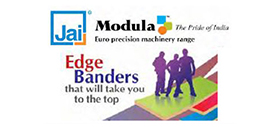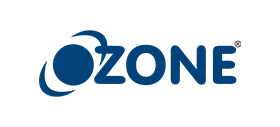Adhesives: best practices, applications, choices

In door manufacturing, every stage – from frame construction to finishing – involves specific materials, techniques and performance requirements. Choosing the right adhesive for each application is essential to ensure that the final product meets strength, durability and environmental standards.
Below, I walk you through the key applications in door production, explaining the role of adhesives at each step and which technologies are best suited.
Frame assembly
The frame is the backbone of the door, usually made of softwood (spruce, pine) and sometimes combined with chipboard or honeycomb cores in hollow-core designs. Requirement of adhesive in such designs caters to structural bond, good penetration into wood fibers, and sufficient open time for assembly. The recommended adhesives are:
• Polyvinyl Acetate (PVAc): D3-grade PVAc provides good strength and moderate moisture resistance, suitable for both industrial and artisanal production.
• Urea-Formaldehyde (UF): For industrial, hot-press processes where speed and strength are priorities.
Panel bonding
On both sides of the frame, skins of MDF, HDF, or plywood are applied to create the door surface. This layer must bond uniformly to avoid bubbles, delamination or warping. The requirements of adhesives in this application includes uniform spread, high shear strength, moisture and heat resistance (depending on the door’s final use: interior or exterior).
The recommended adhesives for such apoplications are:
• Urea-Formaldehyde (UF): Excellent for hot pressing large batches, economical, strong.
• PVAc D3/D4: For cold pressing or hot pressing with less formaldehyde concerns and better flexibility.
• PUR (Polyurethane): For demanding applications, thin skins, or when superior water and heat resistance is required.
Edges assembly
Door edges are finished with solid wood strips or edge banding tape, providing both aesthetic appeal and protection. In such applications, the adhesive must be fast setting, permit clean application, and must be resistant to peeling and impact.
The recommended adhesives are:
• Hot-melt EVA or PO: The standard for edge banding, fast and clean.
• PUR hot-melt: When high moisture and heat resistance are required.
Veneers, laminates
For high-end finishes, decorative laminates are applied over the door surface.
The adhesive needs are that it should spread evenly; no bleed-through on thin decorative materials; resistance to heat and humidity.
The recommended adhesives are:
• PVAc: Easy to handle and formaldehyde-free, good for interior doors.
• PUR: Best choice for thin or sensitive surfaces, or exterior-grade doors.
Final assembly
After pressing, the door undergoes trimming, sanding, drilling for hardware, and surface treatments (painting, lacquering, laminating). Some adhesives may still be used for attaching additional decorative elements or hardware support blocks. Whichever adhesive you choose, compliance with relevant standards is crucial:
• EN 204 (D1–D4): moisture resistance.
• EN 13986/ CARB/ EPA TSCA Title VI: formaldehyde emissions.
• WATT 91: heat resistance.
• EN 314/ EN 12765: bond quality and durability.
By matching the right adhesive to each application step – from frame assembly to final finish – door manufacturers can ensure strong, durable and compliant products. Advances in formaldehyde-free and high-performance adhesives, such as PUR and D4 PVAc, also help meet today’s environmental and quality demands.
Understanding the specific needs of each process step is key to crafting not just a door, but a long-lasting solution.
– The writer is Senior Technician at Unicol Srl.
Comments

- European symposium highlights formaldehyde emission limits
- Egger adopts holistic approach to waste management
- ‘For customers, our lab is an open book’
- Taiwan’s Woodworking Machinery Industry Captivates Global Media on Opening Day of LIGNA 2025
- Coming of age of sustainability
- Intelligent packing line, sander from Woodtech
- Ornare introduces 5 new leather decors
- Richfill Edge Coat offers safer plywood finishing
- Jai’s Optimus range stays ahead of the curve
- Merino’s Acrolam sets new benchmarks in elegance
- Pytha 3D-CAD: where precision meets production
- Raucarp edge bands: simple, affordable
- Greenlam scores a 1st: High Quality Product Award
- Häfele turns space solutions provider
- Hettich bets on intelligent motion for evolving interiors
- Praveedh taking desi innovation to the global stage
- Turakhia shows off its Natural Veneers range
- Egger continues to ‘inspire, create, grow’
- Blum turns heads with new drawer, hinge systems
- Murubi gives American ash a meaningful life
- AR system makes ‘augmented carpentry’ possible
- Felder converts interior firm’s vision to reality
- Smart manufacturing with ‘intelligent’ tools
- Rites of passage: Craftsmanship complements tech in Indian door manufacturing
- Understanding basics of adhesives and sealants
- FFSC looks back at a decade of purpose
- Industrial-grade tools for modern manufacturing
- AWM ties up with Yeutong to boost production
- KolkataWood opens 12-14 September
- AI transforming wood panel manufacturing
- Interzum Jakarta promises a bonanza
- Expert partner in product, factory planning
- CBD Guangzhou 2025 grew 47%
- SCM hosts ‘Timber Construction Days’
- Events Calendar: Industry Fairs you must visit
- Bio-designed ‘leather’ from scrap tyres?
- HiTorc chipper redefines wood processing
- Cooking ‘veggies’ for protein-based adhesives
- Hafele’s digital locks go smart
- Italy’s Essepigi has special door lines
- Mirka is a revolution in sanding, finishing
- Ozone expands range of door hardware
- Adhesives: best practices, applications, choices
- Weber sanding tech stands up to Swiss precision
- Silent heroes in homes: Blum fittings
- Biesse powers ahead with smarter, greener manufacturing
- Homag’s LCS program ensures smooth operation
- Paged Furniture reclaims the past, shapes the future



































